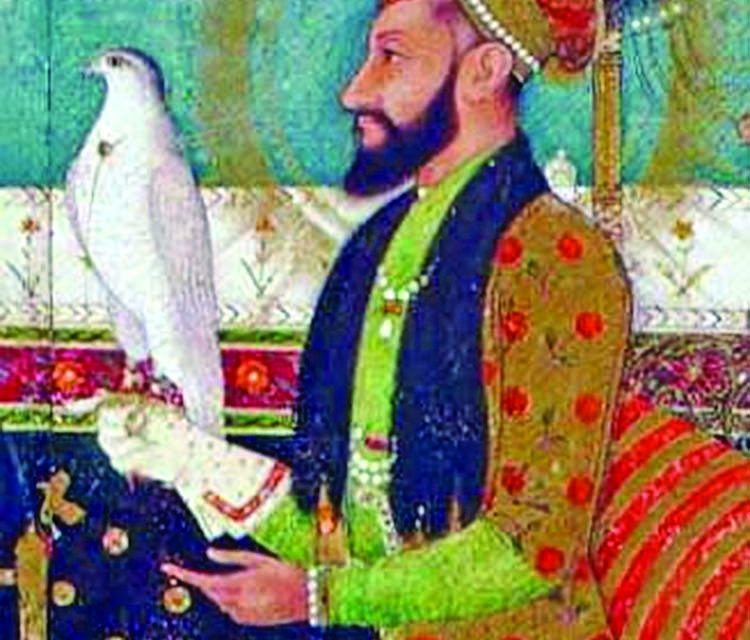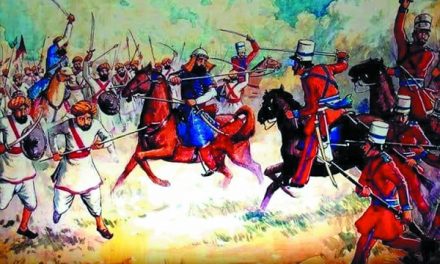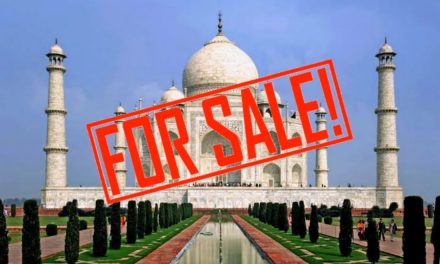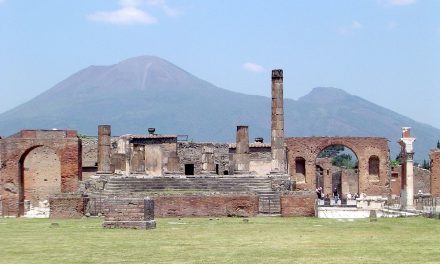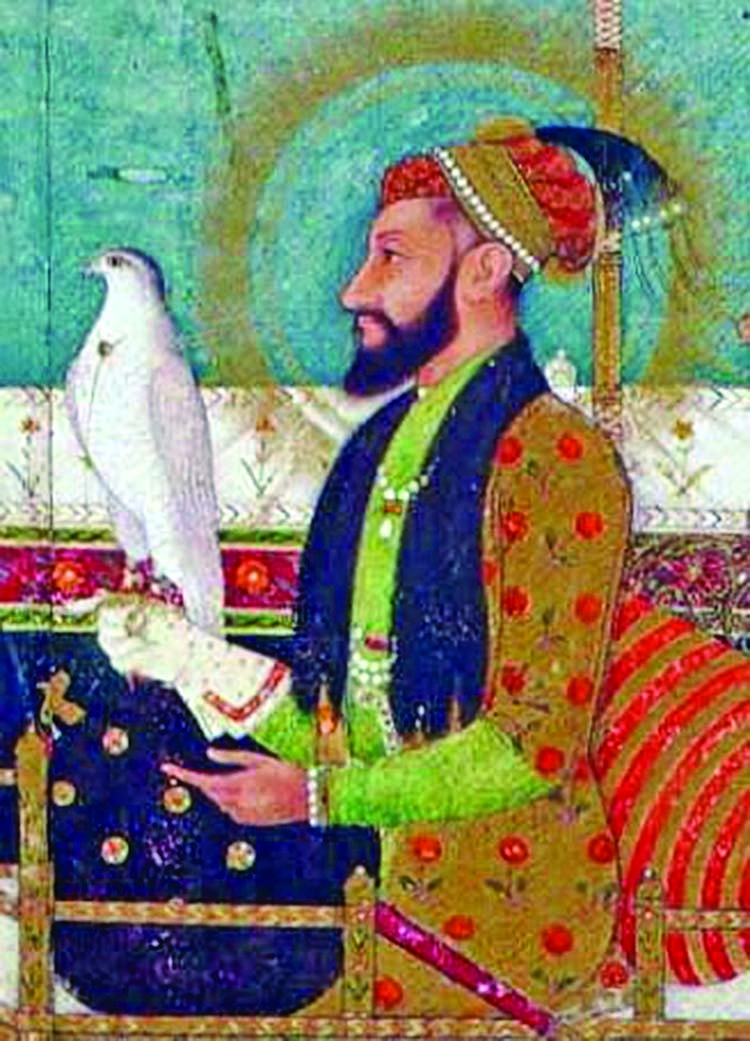
During the mid to late 17th Century, 25% of the world’s GDP went from the Indian subcontinent- 50% was generated from Bengal, which made up 12% of the world’s GDP. Bengal, the Mughal Empire’s wealthiest province, was an affluent region with Dhaka as the capital and the business hub.
Dhaka came into the domain of the Mughal Empire during the reign of Emperor Akbar and Jahangir. However, the conquest and settlement of a great part of what is now Bangladesh, was essentially a Mughal achievement-in a great measure, of Aurangzeb’s reign.
Unlike West Bengal, the Eastern frontier remained isolated due to geographical, climate issues and ethnic origin of the population. Aurangzeb broke this isolation by using his most capable men to develop the region- namely Mir Jumla and Shaista Khan. Their greatest achievement was eradicating the Arakans and Portuguese who raided the territory via the sea and river routes.
The menace of the pirates had disappeared, the jungles could be cleared and colonization had begun. Besides getting Dhaka out of desolation, Aurangzeb annexed Chittagong through Shaista Khan who defeated the Arakanese fleet and saved Chittagong from the pirates’ stronghold. Chittagong, which was renamed Islamabad, proved to be a valuable addition to the empire. Chittagong would not have been a part of the Mughal Empire if it was not for the last Emperor’s interest.
Despite the contributions of this Emperor, he is heavily criticized for his way of ruling. According to many, he destroyed the Indian subcontinent politically, socially and culturally. However, we cannot judge a ruler from the 17th century based on our current mindset and label him as a hero or a villain.
Aurangzeb Alamgir, the sixth ruler of the Mughal Empire, is the most hated king in Mughal history. He was the third son of Shah Jahan, who ruled the subcontinent for nearly 50 years, from 1658 until 1707, and was the last great imperial power before British colonialism.
He was a fearless soldier and a skillful general and made his way to the imperial throne by winning against his elder brother, Dara Shukoh, in the war of succession. The Mughals did not recognize primogeniture, the succession rights of the eldest son. Instead, sons fought one another for their father’s crown, where the fittest would survive.
So, when Shah Jahan fell ill, the war of succession commenced. Aurangzeb indisputably held the Mughal crown only when all three of his brothers were dead or exiled from the subcontinent. Not surprisingly, his father did not die as expected from his serious illness.
Instead, Shah Jahan made a full recovery in a couple of months. But by then the power struggle between his sons could not be stopped: Aurangzeb had already seized the imperial treasury and had begun to pursue his brothers. One could kill brothers in the Mughal era, but not one’s father, which was rendered a heinous act.
Thus, Aurangzeb kept his dad locked up in the Red Fort in Agra. He rose to the throne of a mighty empire, equipped with governance, and the experience and skill in administration and war, which would render him an efficient ruler. Although there had been many fights over succession in Mughal history, the conflict between Shah Jahan’s four sons was perhaps the bloodiest.
During the long struggle for the throne, the central authority tended to lose administrative control over the distant parts of the empire; and after defeating his rivals, Aurangzeb began reorganizing the civil government.
Aurangzeb’s earliest conquests were in the eastern parts of the empire- turning Bengal into the business hub. Right after the operations in the east were over, trouble started on the northwest frontier of the empire. A Yusafzai leader named Bhaku rebelled against Aurangzeb but was soon defeated by the forces of the Attock district, with the help of the reinforcements of Kabul and Lahore.
But peace only prevailed for a brief period until several tribes combined in opposition against the Mughal authorities. They won the combat that the governor of Kabul, Muhammad Amin Khan, engaged in and wreaked havoc. The emperor then sent in replacements for Muhammad Amin Khan and his soldiers but it did not make the situation any better.
The new officers quarreled among themselves and failed to make much progress. Seeing the mayhem Aurangzeb himself went to Hasan Abdal, a convenient half-way station between Rawalpindi and Peshawar, and stayed there for over a year directing the operations. He took officers who were familiar with the area, and by the use of force and diplomacy, he succeeded in restoring peace.
The prominent Pushtu poet Khushal Khan Khattak was one of the tribal leaders who opposed Aurangzeb. He was the head of the Khattak tribe, who had been guarding the road from Attock to Peshawar against the hostile Yusufzais since the days of his great grandfather, and had the right to charge tolls on this highway.
Khushal had fought with distinction in the armies of Mughal, and had sided with Aurangzeb against Dara Shukoh. Yet disagreements existed between him and Aurangzeb, mainly due to the abolition of all tolls within the empire. Kaushal became a bitter enemy of Aurangzeb after being imprisoned for making trouble in the region.
After his release, he rebelled against Aurangzeb with the help of Pathan tribesmen. Some Afridi forces joined the rebellion but the more numerous Yusufzais refused to support Kaushal. Following the trouble with Khushal, the reign of Aurangzeb eventually saw a complete transformation of Mughal-Afghan relations.
The Sikhs, ultimately played an important part in the weakening of the empire and caused some difficulties for Aurangzeb, but he dealt with them in an effective, though harsh, manner. The Sikh faith, founded by Guru Nanak, was part of a general spiritual movement to bring Hinduism and Islam closer together.
In the early years, relations between the Sikhs and the Muslims had been good, particularly because the Brahmins were resentful of the growth of the new movement. The Sikhs had sought support from the Muslims. Akbar himself had visited the third guru and made him a gift from the land of Amritsar on which the Golden Temple had been built.
However, conflict soon arose between the Mughal authorities and the Sikhs. Central Punjab peasants had a militant tradition, and when new religious doctrines that emphasized the relationship of the individual with God and society were adopted, a clash with established authority was inevitable.
The first trouble arrived during the rule of Jahangir, when Guru Arjun provided assistance to the rebellion led by Prince Khusrau. The guru died under torture but advised his son, Gur Har Govind, to maintain an army before his demise. This became one of their greatest strengths. They were able to defeat some Mughals during conflicts but ultimately lost to the authorities.
The succession of gurus was maintained, however, through an agreement with the Mughals. The ninth Guru, Tegh Bahadur, served in the Mughal army on the Assam frontier for some years, but later returned to eastern Punjab and settled down at Anandpur.
He called himself Sacha Badshah (True King), and levied the local population. The imperial forces defeated him, and he was taken to Delhi and put to death by Aurangzeb. His successor was Guru Govind Singh, who focused his efforts on creating a Sikh empire in the hilly areas of eastern Punjab.
It was Govind Singh who gave the Sikhs their very distinctive symbols-the uncut hair, the steel bangle, the sword-that established their identity as a separate people. The Hindu rajas of Punjab suffered due to the growing military strengths of the Sikhs. They fought battles against the Sikhs but the latter would not back down.
At last, they complained to the Mughal governor, who passed on the complaint to Aurangzeb. On the rajas’ undertaking to bear the cost of an expedition, Aurangzeb agreed to send forces to assist them in besieging Govind Singh in his stronghold at Anandpur. Even though the Guru himself escaped from Aurangzeb’s clasp, his sons were executed.
Far more serious opposition to Aurangzeb originated from the Deccan, where the Marathas started their long struggle with the Mughal Empire. Hindus held several offices in the tax and finance departments of the Muslim rulers of Golkunda and Bijapur, and sometimes the top ministerial positions were filled by Deccani Brahmins.
Life in the hill forts of the Western Ghats, which had never been easily accessible and practically cut off from the world during the monsoon, did not appeal to the Muslim officers, and Maratha chiefs and soldiers were employed in large numbers in the garrisoning of these forts.
Since Maratha statesmen and warriors controlled various departments of the Muslim states of Ahmadnagar, Golkunda, and Bijapur, the conflicts of the Mughals with these states provided them with an opportunity to advance their sectional interests. Shahji, who served under the sultans of Ahmadnagar and Bijapur and had large estates in Poona, was among the Maratha statesmen who rose to prominence during the days of Shah Jahan.
His significance may be measured by the fact that he named the Nizam Shahi boy as the nominal sultan of the kingdom of Ahmadnagar, and in his name reoccupied the entire western portion of the old realm as far as the sea. Shah Jahan was in a position to deal with him, and Shahji, after making his submission to the Mughals, sought service with the ruler of Bijapur.
Shahji’s son, Shivaji, had more than fulfilled his father’s dreams. He lived in the spurs and valleys of the Ghats in his early days, which had to be his frontline. A number of young men joined him, and in the troubled conditions of the Deccan began to take control of the hill fortresses.
These aggressive actions were ignored for a long time in Bijapur, but eventually, a strong contingent of ten thousand cavalry was sent against him under Afzal Khan. Shivaji lured Afzal to a private meeting and then murdered him with a dagger. The leaderless troops of Bijapur were routed by Shivaji’s combatants who lay in ambush. The following year, Shivaji fell into dispute with the Mughal rulers.
Aurangzeb had appointed Shayista Khan, Viceroy of the Deccan, with instructions to suppress Shivaji’s activities. He gained a few victories and recaptured several forts, but the Marathas carried out a night attack on his camp at Poona, and although the Viceroy had escaped, his son was killed.
Shaista Khan was recalled by Aurangzeb, who then sent Dilir Khan and Raja Jai Singh, with his son, Prince Muazzam, to the Deccan. The imperial generals forced Shivaji to sue for peace. Later he attended the court in Agra, but insulted at being given the mansabdar rank of only five thousand horsemen, he made his displeasure public.
He was kept under surveillance, but he escaped to the Deccan. On his return, Shivaji formally assumed the title of Maharaja, and since Aurangzeb was busy in the northwest, he was not disturbed. Upon his passing, the insane brutality of his wretched son Shambhuji attracted the attention of the Mughal emperor.
Shambhuji raided Burhanpur and carried out such cruelties against the Muslim population that the qazis sent a manifesto to Aurangzeb to stir him up. The Mughal emperor, who had been concerned about the developments in the Deccan since his rebellious son, Prince Akbar, had taken refuge in Shambhuji’s court, decided to go south. He spent the last twenty-five years of his life in Aurangabad.
Bijapur and Golkunda, which often sheltered the Maratha raiders, were annexed over time, and Shambhuji was captured and executed the following year, but this did not mean the end of Aurangzeb’s troubles in the Deccan.
The Mughals had achieved many triumphs against the Marathas, but they proved to be temporary. Often the forts won at great expense and, after a long effort, would be lost by the treachery or negligence of the Muslim commanders.
But even though Aurangzeb had invaded most of the Maratha forts, he was unable to curtail the powerful rampaging Maratha bands that had contested Mughal authority whenever they had the opportunity. After Aurangzeb’s death, the Marathas became a significant factor in the collapse of the Mughal Empire.
As emperor, he ruled more of India than any previous monarch, but he lived a life of austere piety in a court that had become a byword for luxury. Yet, few rulers have pursued policies that have sparked more controversy among generations to come. In large measure, this is the result of his religious policy objectives, for they were the ones that colored men’s assessment of his reign.
Even as a young man, Aurangzeb was renowned for his commitment to Muslim religion and to the observance of Islamic injunctions, and in some of his letters, written during the fight for succession, he declared that he was behaving “for the sake of true faith and the unity of the kingdom.”
He introduced policies that could make his dominion a true Muslim state, as soon as he was securely on the throne. In the economic sphere, he had shown a firm resistance to all unlawful practices and to all taxes which had not been approved by Islamic law.
Aurangzeb’s effort to undertake state affairs in line with orthodox Islamic policies brought to the fore the problem faced by every monarch who tried to make Islam a driving force: the role of the Hindu majority in relation to the state.
When the jizya, which had been discontinued for almost a century, was reintroduced, it was the Hindus alone who suffered. Aurangzeb had often been accused of closing the doors of official employment for the Hindus, but a study of the list of his officers shows that this is not the case.
There were actually more Hindu personnel under him than under any other Mughal emperor. Although this was mainly due to a general increase in the number of officers this indicates that there was no restriction on the jobs of Hindus.
It is often considered that one of the most important factors in the downfall of the empire was Aurangzeb’s religious policies, but it is doubtful. Over the years, several people have portrayed Aurangzeb as a plausible antagonist, with motives more linked to their interests than to the rule of Aurangzeb.
For instance, the British spread great lies against him, as well as against other pre-modern Indian Muslim rulers, because the barbarous Aurangzeb rendered British colonial rule seem civilized by contrast. British colonialism ended 70 years ago in the subcontinent, but their misapprehension of the Mughals and other Indo-Muslim rulers had a long and toxic afterlife.
Of the many scapegoats among Hindu nationalists, Aurangzeb is perhaps the favored Indian Muslim to condemn. Although it is easy to make fun of some of the more outlandish mischaracterizations, the stakes involved remain quite serious.
There is simply no way of understanding the state of the subcontinent on the eve of British colonialism without a reasonable, historically grounded viewpoint on Aurangzeb, who was almost definitely an important political figure in the subcontinent in the 17th century. His kingdom was huge, numerically and geographically.
At the height of his power, Aurangzeb controlled a population of over 150 million, more than the entire population of Europe at that period. Including the great conquests of the emperor, the Mughal kingdom stretched over 3.2 million square kilometers, including parts of what is now India, Pakistan, Afghanistan, and Bangladesh.
The imperial treasury had exquisite collections of gems, diamonds, and gold that probably made Aurangzeb the richest man of his day. In the eyes of most people in Asia and Europe of the 17th century, Aurangzeb Alamgir truly lived up to his names: the throne-adorner (Aurangzeb) and the world-seizer (Alamgir).
Aurangzeb’s half-century on the Mughal throne is best understood by pursuing and cultivating a set of core cultural values: power, justice, piety and the Mughal kingship.
Aurangzeb is a critical figure in understanding our history. Historian Audrey Truschke took it upon herself to compose a biography of Aurangzeb for the general readers to disabuse them of the many misconceptions about the King of Mughal. All the sources mentioned in the book have been known for years and there is not a single new source used therein.
Of all these, justice strikes many as a surprising way of thinking about a king so demeaned today. It is clear that the punishment of Aurangzeb, like the society he existed in, was cruel. Mughal Empire of the 17th century was a different time, and Aurangzeb’s Islam can not be shunned by today’s conceptions of radical against traditional.
Aurangzeb’s vision of justice required that he extend safety and security to all within his empire. He struck hard against enemies who threatened the integrity or peace of the Mughal state, no matter their status or religion.
It was Aurangzeb’s disdain for state security that contributed to his policies towards the Hindu temples, a problem which seems to be in the public imagination of India today. By comparison to Aurangzeb’s contemporary image as a temple destroyer, thousands of Hindu temples dotted the landscape of Aurangzeb’s empire, and the vast majority still remained at the end of his reign.
Plenty of documentation attests that Aurangzeb issued orders to secure Hindu and Jain temples, and provided property and other favors to temple associates. Aurangzeb has even chastised Muslims who had offended the religious Brahmins.
At times, Aurangzeb demolished selected temples, particularly when their associates assisted rebels or otherwise threatened Mughal state interests. In all, during nearly 50 years of his rule, Aurangzeb probably destroyed a few dozen Hindu temples.
At that time, people did not draw a firm line between religion and politics, and it was normal to treat temples as legitimate targets of punitive state action. Nevertheless, in the seventh century, long before the advent of Indo-Muslim rule, Hindu kings had started the custom of profaning one another’s temples.
Today, however, many people are enraged by the thought of the Temple-Destruction. Consequently, this element of Aurangzeb’s law, somewhat unique in the norms of today, is actually one of the most contentious aspects of his reign.
Among historians, the potential role of Aurangzeb in undermining the government of Mughal remains a subject of vigorous debate. Such discussion thrives, in part, on the startling parallels that mark his reign.
Aurangzeb extended the Mughal Empire to its greatest extent, creating four additional provinces that together formed more than one-quarter of the Mughal empire. Yet he may have overstretched imperial resources, positioning the Mughal Empire to collapse after his death.
He was the wealthiest king of his day, boasting of items like the ruby of Timur and the diamond of Koh-i-Noor. Nonetheless, Aurangzeb enjoyed a simpler life, reciting the Quran and making prayer caps by hand. He was widely feared and respected, but his letters from later life suggest that a man beset by his own weaknesses and fear for the future of his empire.
Aurangzeb is a critical figure in understanding our history. Historian Audrey Truschke took it upon herself to compose a biography of Aurangzeb for the general readers to disabuse them of the many misconceptions about the King of Mughal.
All the sources mentioned in the book have been known for years and there is not a single new source used therein. It simply reinterprets existing sources where Aurangzeb is just a mango – loving, cap – selling devout Muslim instead of the perpetrator of the Indian genocide.
In order to gain a more accurate perspective on this influential emperor and the world he helped to create, we must embrace the project of understanding Aurangzeb on its own terms. Studying Aurangzeb also helps to challenge modern ignorance and hatred by presenting us with a complicated man that we can not explain simply by referring to modern categories and biases.
Knowing about the last great emperor and his contributions is integral as it can help us comprehend our past as well as our present. In the popular imagination, Aurangzeb’s reputation is one of absolute tyranny, but we must change that.
Aurangzeb was an excellent statesman, poet, and writer. During his reign, he retained links with the Sufi communities renowned for their exuberant spiritual practice in Islam, and was buried in the Sufi shrine. Despite being one of the wealthiest people of his time, he lived a very humble life; his tomb reflects his simple lifestyle. He always put the state above his personal desires.
Even after 50 years of extraordinary kingship, people never fail to criticize the man who led the subcontinent to become one of the richest in the world. As mentioned before, we cannot judge a ruler based on our current notions- systems change with time.
This mythification of Aurangzeb, under the ironic guise of debunking man-related myths, needs to be called out, and this article is an attempt in that direction.

